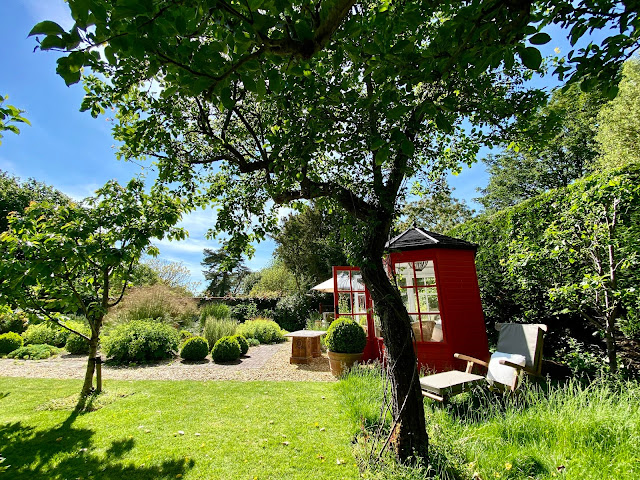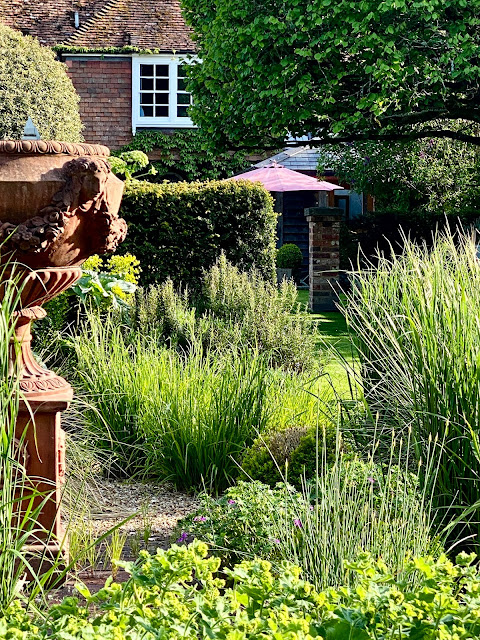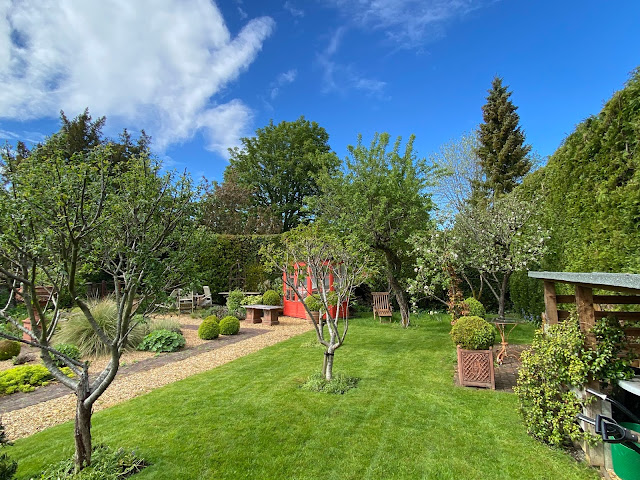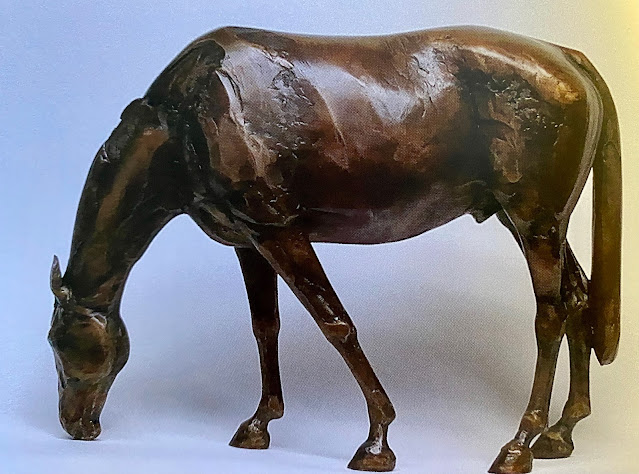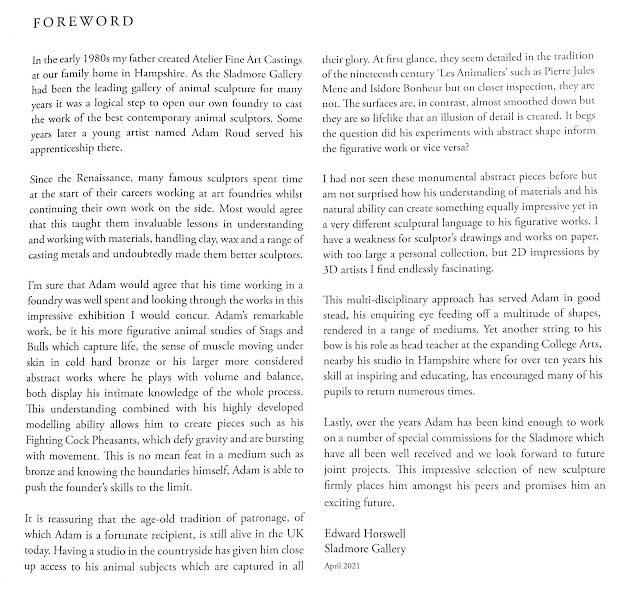A selection of writings, speeches, photographs and events as well as some of my favourite literary passages.
Thursday, 15 July 2021
Wednesday, 16 June 2021
Thoughts on Our Food Culture
 |
| Patrick and Catherine attending a wedding in the 1930s |
'I’ve supported Pasture for Life ever since reading ‘Grass-Fed Nation’ a while ago, but few still realise the value of making sure that what we eat has a decent amount if omega-3 in it. Anything one can do to improve children’s nutrition is worth it - but Jamie Oliver didn't last long with his brave and sensible school food initiatives. And that Panorama programme a couple of week’s ago about the chap who ate UPF (Ultra Processed Food) every day for a month was an eye-opener - not least because living off that stuff saves both time and a lot of money! But his brain scan before and after showed that he’d actually become addicted to it. What price good fresh children’s food? The problem is that the link between UPF and health hasn’t really been made explicit enough for hard-pressed families and, schools and hospitals to change and spend more on fresh food. I really don’t know how to do this with UPFoods being advertised as heavily as they are and anyone in authority speaking about a return to healthy eating being derided as elitist. Our whole food culture has gone wrong. I’m afraid we don’t even do cafe culture properly; the availability of sweet or carb-heavy foods is so great and our knowledge so poor that practically everyone you see now is carrying too much weight. Kei has recently realised this and has taken herself in hand and lost 7kg by eating more carefully and running. Have a look at this photo of my father and his first wife going to a wedding in the 1930s. Look how slim all of them are (and he never carried any extra weight). A photo of wedding guests today would look very different, as I know from the weddings that are held here at the Grosvenor.
This was a piece I wrote some time ago about Winchester’s food shopping which contrasts badly with Stockbridge, which fortunately is pretty good!'
Wednesday, 9 June 2021
The Livery Companies' Initiative during the Pandemic 2020 - 2021
 |
| The scope of the Livery Companies' Initiative |
When the pandemic struck in early 2020, the Master of the Drapers' Livery Company, Tim Orchard, and Liveryman of the Drapers' Livery Company asked themselves what they could do by way of giving practical help during the first lockdown, and they decided that the best way was to use the considerable in-house catering capacity of Drapers's Hall (which of course was closed for its normal function) and cook meals for the staff of the City's hospitals.
The Clerk, Col Richard Winstanley, took up the reins and found support and connections with several other Livery companies as well as links to the City's hospitals and by 16th April, the first batch of 200 meals was supplied to the Royal London Hospital, transported by London cabbies through the Hackney Carriage Drivers' Company. The Grocers', Merchant Taylors' and Fishmongers' Companies all joined in and eventually more than 60 companies contributed to an initiative that provided more than 170,000 meals for tired and hungry workers of Bart's NHS Health Trust as well as community projects in East London.
The Drapers' have published a cookbook which, although not necessarily of the very meals that were supplied, are created by the team of chefs who cooked all the thousands of meals produced as part of this initiative, which has been so much a natural outset for the Livery Companies' philanthropic mission.
 |
| The Chefs - Selva Muthusamy, Merchant Taylor's, Stefan Pini, Fishmongers. |
 |
The Livery Company Cookbook was born out of the Livery Kitchen Initiative, seen here with a Drapers' Raphael Seat in the background. To order a copy, e-mail events@thedrapers.co.uk |
Friday, 4 June 2021
An Astonishing Sale of Clocks Collected by John Taylor 2021
 |
| A Congreve Rolling Ball Clock |
As a schoolboy, I used to stand outside Marsh's shop (now Carter, Marsh) in the Square, Winchester, watching the ball roll down the tilting brass tray of a clock in the window, enthralled.
Many years later I read Deva Sobell's brilliant book 'Longitude' and marvelled at at the skill and ingenuity shown by the clockmakers of the C17th as they competed to win the Admiralty's prize for an accurate ship-borne chronometer that finally allowed sailors to work out where they were on the ocean.
Since then, my knowledge has been enhanced somewhat through a friend who is a life-long collector, and have come to understand his passion for the sheer beauty and engineering brilliance of early clocks. However, even with his guidance, I wasn't prepared for the quite astonishing quality of this famous collection of clocks being sold by Carter. Marsh in June and July 2021.
A beautiful catalogue has been prepared for the sale and a shorter electronic version can be found here
| ||||||||||||||||||||||||||
|
Wednesday, 2 June 2021
The Bishop of Winchester 'Steps Back' - 'Dakingate' 2021
Announcement by the Suffragan Bishop of Southampton. Deborah Sellin in May 2021
Dear Friends,
Bishop Debbie
|
This anodyne announcement has been followed by much more specific accusations;
Finally, her resigns.
I have now received confirmation that Her Majesty the Queen has accepted my retirement as Bishop of Winchester. I wanted you all to hear my decision as directly as possible – and doing it this way rather speaks to our times. Some formalities and details need to be finalized but I’ll be leaving the Diocese in early February and handing over my responsibilities to others in the meantime. Please pray for all involved in this transition process.
Mahatma Gandhi said that “unity to be real must stand the severest strain without breaking.” I have always been clear that, as your Bishop, I should be there to build and foster togetherness across our Diocese, focused upon our life together in Christ, and upon our joint mission to serve Christ in our communities and to sustain Christian witness in daily life. Sadly, it seems it is no longer possible for me to fulfil this role.
The last eighteen months have brought enormous pressures to bear on us all, individually, as a country, within our families and communities, and as a Diocese. The painfully difficult financial decisions made over the last year have caused real anguish. In trying to secure a sustainable future for the growth of the Diocese, it is clear that I’ve not done enough to acknowledge what we have lost in this process. To those I’ve hurt or let down, I am sorry.
I realise that the steps taken to stabilize the finances continue to cause upset. Bishop’s Council has received full reports in recent weeks from the Diocesan auditors and legal advisers, explaining and corroborating the decisions made by the Diocesan Board of Finance. None of this makes those decisions any easier to take. Nevertheless, I hope there is some comfort in the clarity now provided, and that faith can be restored in the relevant Diocesan staff and functions as the pastoral reorganisations proceed. Please continue to pray for all those involved. Pray too for all serving in the parishes and various projects: that the church and its witness may grow in the Diocese.
I could not have come to my decision, or indeed found a way through this recent period, without the love and support of Sally, my children and close friends. While I have not seen much of what has been said about me, my family and friends have seen more, and I have seen the effect it has had on them. They are the people who know me best, of course – and I’ve drawn upon their love and their view of me during these difficult times.
It has been a privilege to serve a Diocese that has Companion links across the world. I’ve been reminded of previous ministry experience: of the need to live on other people’s terms to see the world they see and to know the Christ they follow. I hope these links will continue to grow in strength and in significance. It’s also been a great joy to be part of a Diocese where education is taken seriously at all levels, not least, Further & Higher Education. All of us are called to pray and witness in such a way that the coming generations will find fullness of life in Christ.
I will remain proud of what has been achieved across the Diocese over the past 10 years. For there to have been a record number of ordinands at the Cathedral recently is a wonderful achievement for those involved in the School of Mission and in the parishes. I believe each and every one of our new clergy – and the many lay people who’ve received the Bishop’s Commission for Mission – will have a valuable role to play in the next stage of the Diocese as it witnesses to Christ’s mission in this region, in the life of the nation and across the Anglican Communion. The new national strategy for the Church of England offers an inspirational trajectory for such future developments.
As for me and Sally, we are planning a move to Plymouth, and we’re looking forward to making new friends, as well as to visits from old friends and from our growing family. Thank you for all we have shared. We will miss you. God bless you.
+Timothy Winton
Bishop Debbie is made 'Acting Bishop of Winchester'
That's all for now folks!
Tuesday, 1 June 2021
Old Swan House Garden in May 2021
Thursday, 27 May 2021
Adam Roud - Sculptor
Adam Roud is a fine sculptor and painter who has an exhibition at he LightRoom, Arlesford in May and June 2021. I have admired his work since encountering it at an exhibition at Turner & Thom in Stockbridge and have commissioned him to make a bust for me, as a memento for my children.
 |
| Adam Roud |
His exhibition is accompanied with a catalogue bearing an interesting and highly complimentary forward by Edward Horswell of Sladmore Gallery.
For more photos, click here
Wednesday, 19 May 2021
Hardy's Cottage Plants Chelsea Display in May 2021
I had my own early visit to Chelsea today. Rosy Hardy, who has won gold for her displays, had prepared for the May show which is now postponed until September. She says she can't change it as the plants take about two years to prepare, so she set up her stand at Hardy Cottage Plants in Whitchurch and allowed us to visit by booking. It was a wet day but the rain just held off and it was a delight to be able to go round the stand in the open air (it is usually in a tent which means weaker filtered light) and without the usual crowds. The stand was exceptional with masses of plants in perfect condition, beautifully displayed. I particularly liked the irises. For a few photos, click here https://flic.kr/s/aHsmVFYKs4









